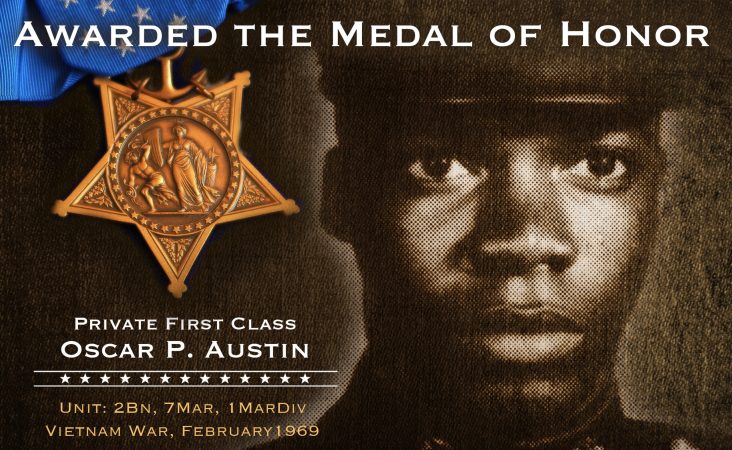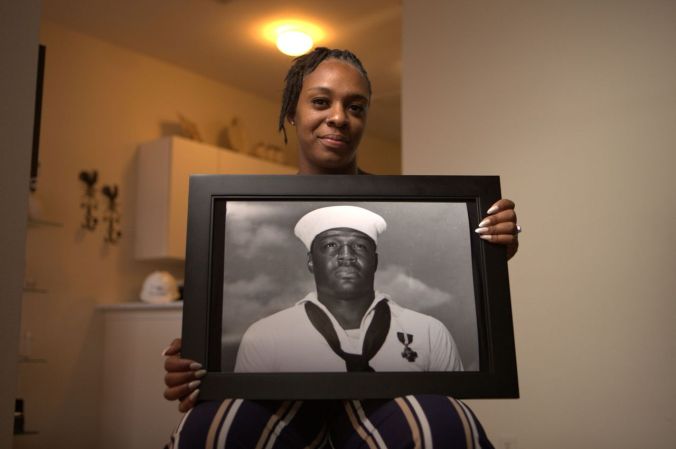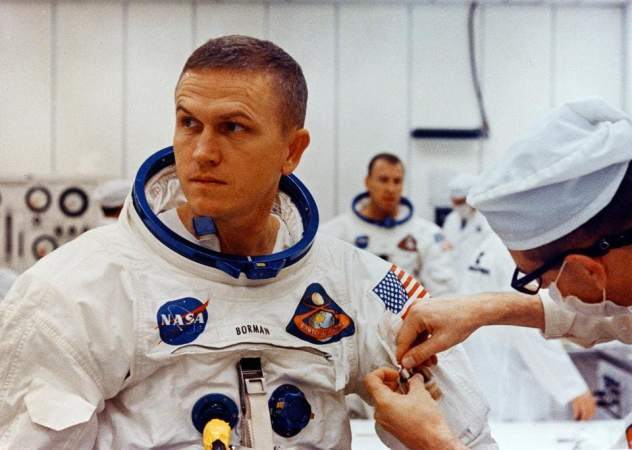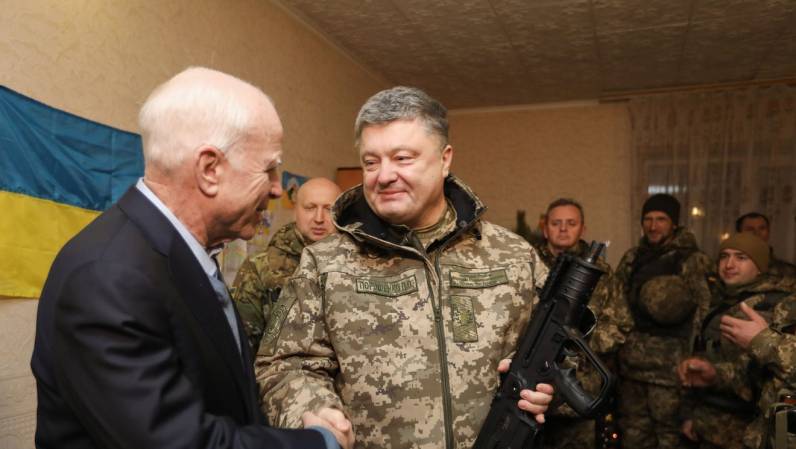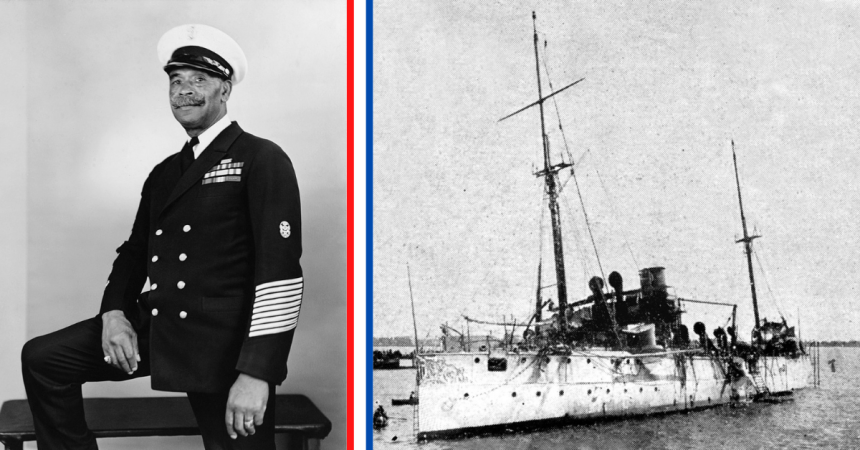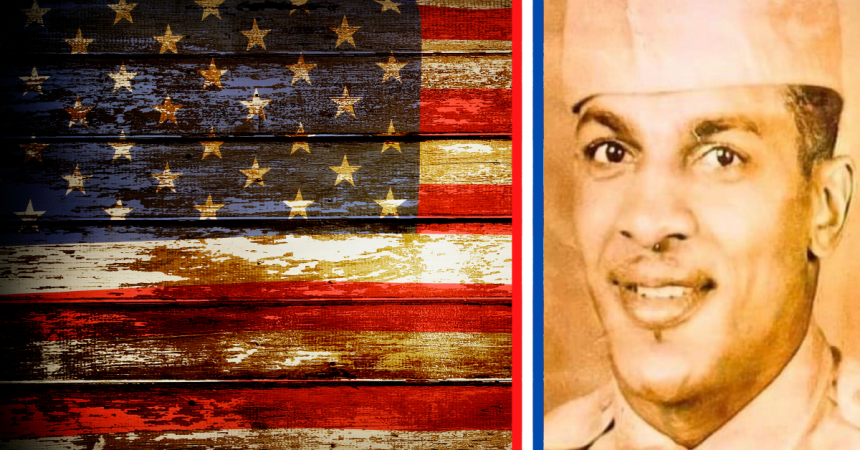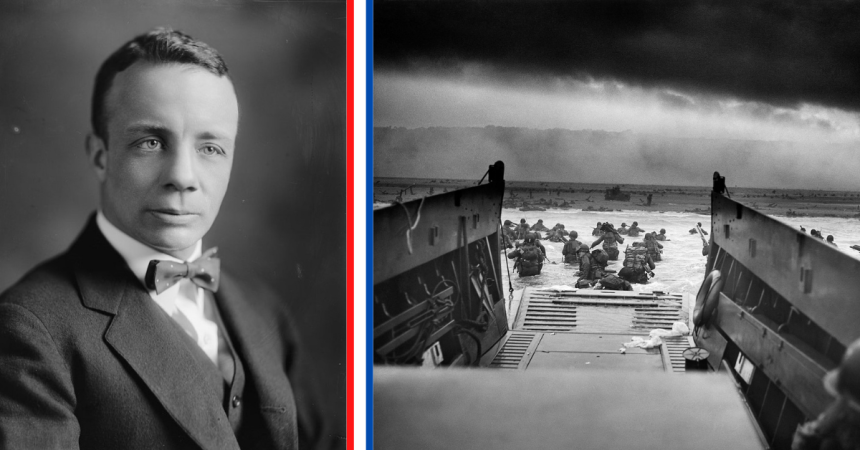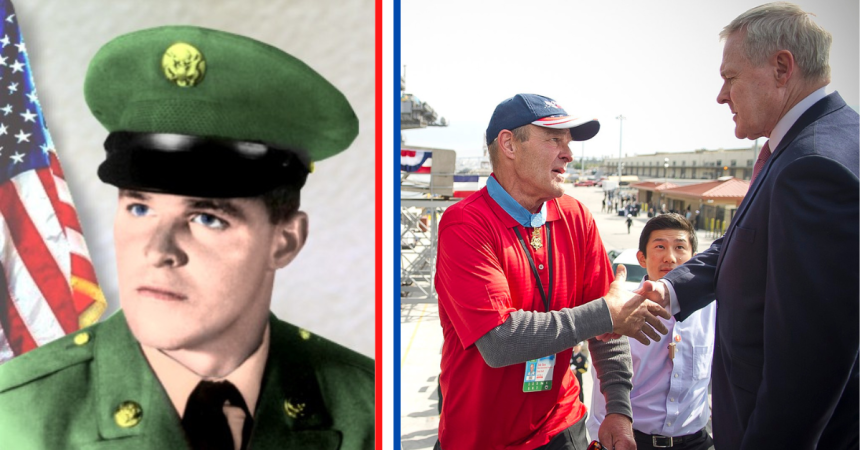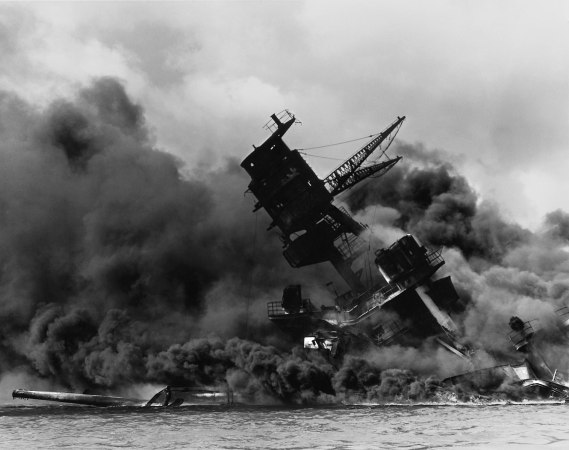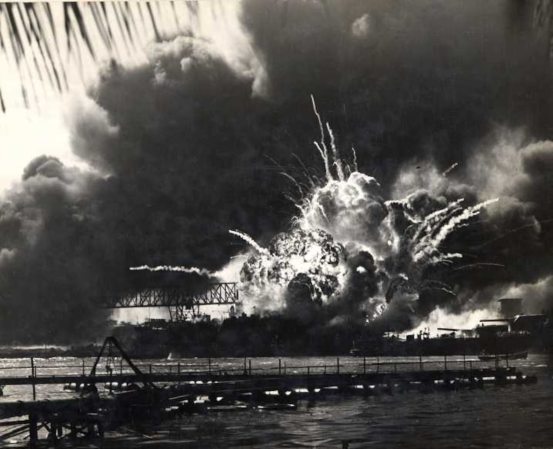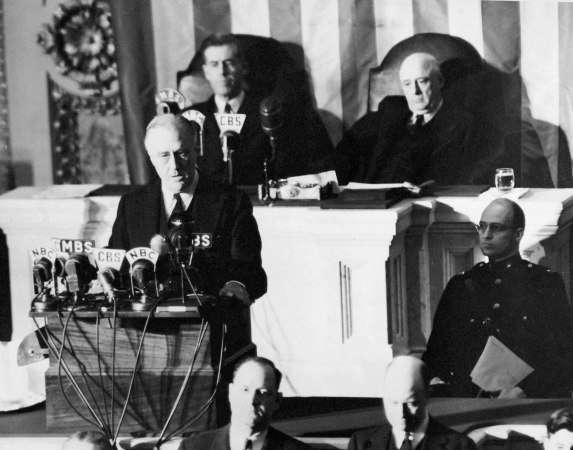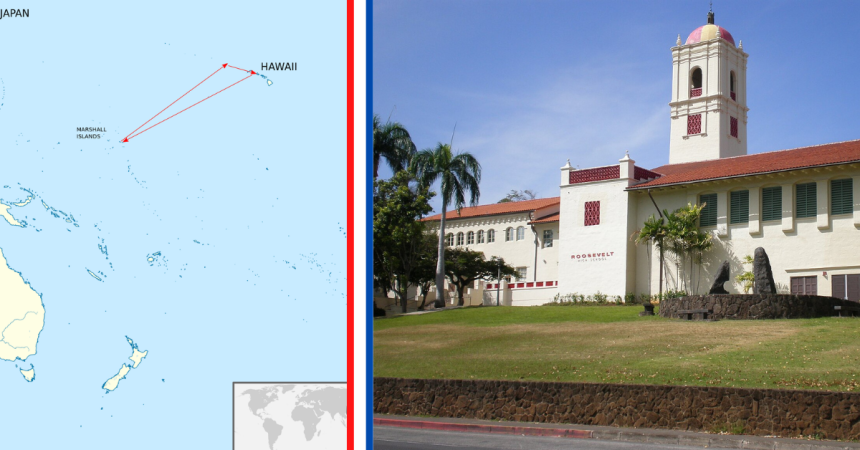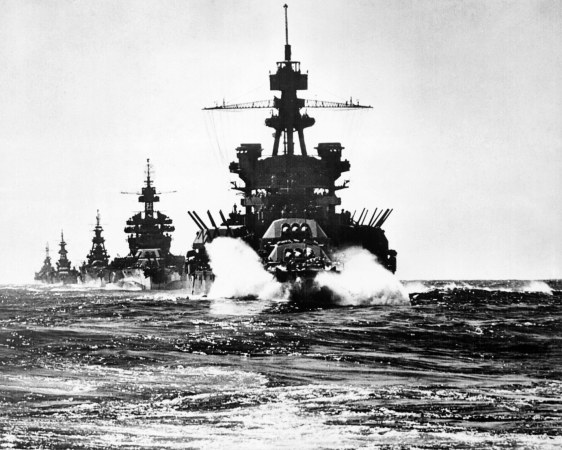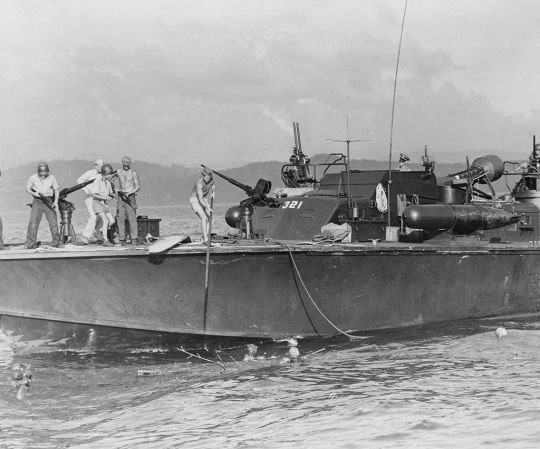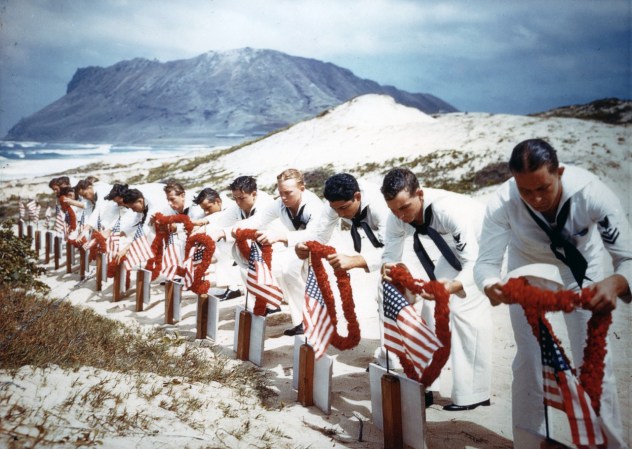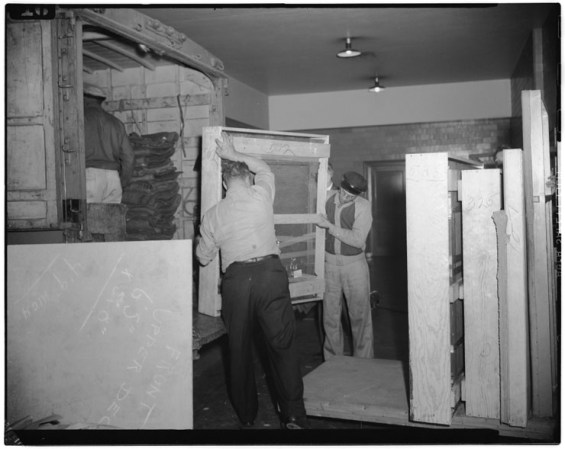The Japanese surprise attack at Pearl Harbor on December 7, 1941, killed nearly 2,500 people and devastated U.S. military forces based in Hawaii. However, in the midst of the death and destruction, heroic servicemen performed acts of bravery to fight back against the attackers and save their comrades. Fifteen men were awarded the Medal of Honor, America’s highest military decoration, for such actions on that infamous day.
These are the 15 Medal of Honor recipients from Pearl Harbor
1. Capt. Mervyn S. Bennion

As captain of the battleship USS West Virginia (BB-48), Capt. Bennion dutifully directed his sailors in defense of the ship during the attack. When the nearby USS Tennessee (BB-43) was hit by a bomb, shrapnel cut through West Virginia and wounded Bennion. His sailors attempted to move him to the aid station for treatment, but Bennion refused to leave his post. Eventually, Bennion ordered them to leave him and save themselves. Holding his wounds closed with one arm, he continued to command the ship until he died of blood loss.
2. Chief Aviation Ordnanceman John W. Finn

Chief Finn was at home when the attack on Pearl Harbor started. Upon driving down to his squadron at Naval Air Station Kaneohe Bay, he found most of their PBY Catalina flying boats already on fire. Despite this, some of his men manned the guns inside the burning planes while others removed the guns and mounted them on makeshift stands. Taking a .50-cal machine gun from a painter, Finn mounted it on a moveable gunnery training platform and moved into the open for a clear field of fire. Over the next two hours, he blasted away at Japanese planes while taking heavy fire himself. Finn suffered 21 distinct wounds but continued to fight back. After the attack and despite his wounds, Finn helped arm the surviving aircraft to fly patrols around Hawaii.
3. Ensign Francis C. Flaherty

Ens. Flaherty was aboard his ship, USS Oklahoma (BB-37), when three torpedos ripped through her sides. As the battleship started to capsize, men abandoned ship and jumped into the water. However, Flaherty remained in one of the gun turrets, providing light so the crew could escape. When Oklahoma capsized completely, Flaherty and many of his shipmates were trapped inside the hull. Although 32 crewmen were rescued in the following days, he was not one of them.
4. Lt. Cdr. Samuel G. Fuqua

When a bomb hit the stern of the USS Arizona (BB-39), the explosion knocked Damage Control Officer Lt. Cdr. Fuqua unconscious. When he came to, Fuqua directed firefighting efforts to save the ship as well as the rescue of wounded sailors. Even after Arizona‘s forward magazines exploded, shaking the whole ship and setting fires all throughout, Fuqua remained calm and directed the crew in their duties. Moreover, he was also Arizona‘s surviving senior officer. When Fuqua realized that the ship could not be saved, he gave the order to abandon ship. Directing the evacuation from the quarterdeck, Fuqua abandoned his post only after he was certain that all surviving crewmen had already left.
5. Chief Boatswain Edwin J. Hill

USS Nevada (BB-36) is the only battleship that attempted to escape Pearl Harbor during the attack. She was only able to do so because of Chief Hill. After diving off the back of the ship and into the harbor, he climbed onto the dock and released Nevada from her mooring. Hill then dove back into the water, caught up to the battleship as she steamed away, and climbed back aboard to lead his sailors. The 47-year-old chief, with 30 years of Naval service, directed the young 17 and 18 year olds to take cover behind the ship’s turrets as Japanese planes strafed the ship. Hill attempted to drop Nevada‘s anchor when a bomb struck the ship’s bow, killing him and 46 other sailors.
6. Ens. Herbert C. Jones

Ens. Jones was about to take over his watch on the USS California (BB-44) when a torpedo and bomb struck the ship. Trying to rescue a wounded shipmate, Jones dove into a cloud of smoke and crawled along oily decks until he passed out from the fumes. When he came to, Jones directed an antiaircraft battery in defense of the ship. With the ammunition hoist out of action, he organized a supply party to haul ammunition up from belowdecks. When a bomb struck near the men and wounded Jones, he ordered them to save themselves. “Leave me alone! I am done for,” he told them. “Get out of here before the magazines go off.”
7. Rear Adm. Isaac C. Kidd

As Commander Battleship Division ONE, Chief of Staff and Aide to the Commander of the Battleship Battle Force and Senior Officer Present Afloat aboard the flagship, USS Arizona (BB-39), Rear Adm. Kidd made straight for the ship’s bridge at the start of the Japanese attack. Even as the ship’s magazine exploded, he remained at his post and courageously discharged his duties. Kidd continued to do so until a direct bomb hit on the bridge killed him. He is the highest-ranking casualty at Pearl Harbor, the first U.S. Navy flag officer killed in action during WWII, and the first killed in action against any foreign enemy.
8. Gunner Jackson C. Pharris

Gunner Pharris was on the third deck of the USS California (BB-44), in charge of an ordnance repair part, when the first torpedo struck the ship almost directly beneath his station. Thrown into the air, Pharris suffered a concussion and was stunned, but sprung into action once he recovered. Without orders, he organized a working party to hand ammunition up to the antiaircraft guns from belowdecks. After the second torpedo struck California, Pharris ordered shipfitters to counterflood and combat the list. During all of this, he also braved nauseous fumes to rescue unconscious shipmates from flooding compartments, twice falling unconscious himself. Pharris was awarded the Navy Cross, which was later upgraded to the Medal of Honor.
9. Chief Radioman Thomas J. Reeves

Chief Reeves was also assigned to the crew of the California. When the ship’s mechanized ammunition hoists were rendered inoperable, he assisted in hand-supplying antiaircraft ammunition on his own initiative. Reeves did so in a burning passageway, with complete disregard for his own safety, until he was overcome by smoke and fire.
10. Chief Machinist Donald K. Ross

USS Nevada (BB-36) was only able to get underway during the attack because she had power. This was provided by her dynamo (electrical generator) rooms. When the forward dynamo room filled with smoke and steam, Chief Ross ordered his sailors to abandon their posts and continued to work alone until he was blinded and fell unconscious. After he was rescued and resuscitated, Ross returned to secure the forward dynamo room and worked in the aft dynamo room until he collapsed from exhaustion. When he gained consciousness, he continued to carry out his duties until Nevada was beached.
11. Machinist’s Mate First Class Robert R. Scott

When USS California (BB-44) was hit by a torpedo, a compartment containing an air compressor for the guns began to flood. The men stationed in the compartment abandoned their posts as the water rose around them. However, MM1 Scott refused. “This is my station and I will stay and give them air as long as the guns are going,” he told his shipmates. True to his word, Scott remained at his station until the end.
12. Chief Watertender Peter Tomich

When Pearl Harbor was attacked, USS Utah (AG-16) had already been converted from a battleship to a target ship. However, she was still a target for the Japanese and was torpedoed and bombed. As the ship began to capsize, Chief Tomich remained at his station in the boiler room. He secured the boilers and ensured that other men escaped, sacrificing his own life to do so.
13. Captain Franklin Van Valkenburgh
Capt. Van Valkenburgh took command of the USS Arizona (BB-39) less than a year before the attack on Pearl Harbor. When the Japanese struck, the skipper ran straight from his cabin to the navigation bridge to command the ship’s defense. A quartermaster in the pilot room asked Van Valkenburgh if he would prefer to command from the conning tower which was less exposed to Japanese strafing; he refused. When an explosion rocked Arizona, Van Valkenburgh, along with the quartermaster and an ensign, were thrown to the deck as the windows of the bridge all blew out. Although the ensign managed to escape, the skipper and the quartermaster were never seen again. Fed by ammunition and oil, fire raged aboard Arizona until December 9. Despite a thorough search, Van Valkenburg’s body was never recovered; only his Annapolis class ring.
14. Seaman First Class James R. Ward

Seaman Ward joined the Navy just over a year before Pearl Harbor. His first assignment out of basic training was the USS Oklahoma (BB-37). After taking three torpedo hits, she began to capsize and the order was given to abandon ship. Despite this, Ward remained in a turret and held a flashlight so his shipmates could escape. In doing so, he sacrificed his own life to save theirs.
15. Commander Cassin Young

At Pearl Harbor, Cdr. Young was the skipper of the repair ship USS Vestal (AR-4), which was damaged by both Japanese bombs and explosions from the USS Arizona (BB-39) moored next to her. Despite the damage, Young directed offensive fire from his ship, even manning one of the anti-aircraft guns himself. When Arizona‘s forward magazine exploded, he was thrown overboard. Shaking off the concussion, Young swam through burning oil and climbed back aboard Vestal. Determined to save his ship, Young got Vestal underway and successfully beached her.
Midway – 1st Lt. George H. Cannon

Although not at Pearl Harbor, Lt. Cannon was awarded the Medal of Honor for actions at Midway Atoll during the simultaneous Japanese surprise attack there. Shelling by two Japanese destroyers hit the command building and communications building. Although he was wounded by shrapnel, Cannon refused medical treatment until his Marines were treated first. He also worked to restore communications. As a result, Cannon died of blood loss by the time he was treated. He was the first Marine to receive the Medal of Honor during WWII.



